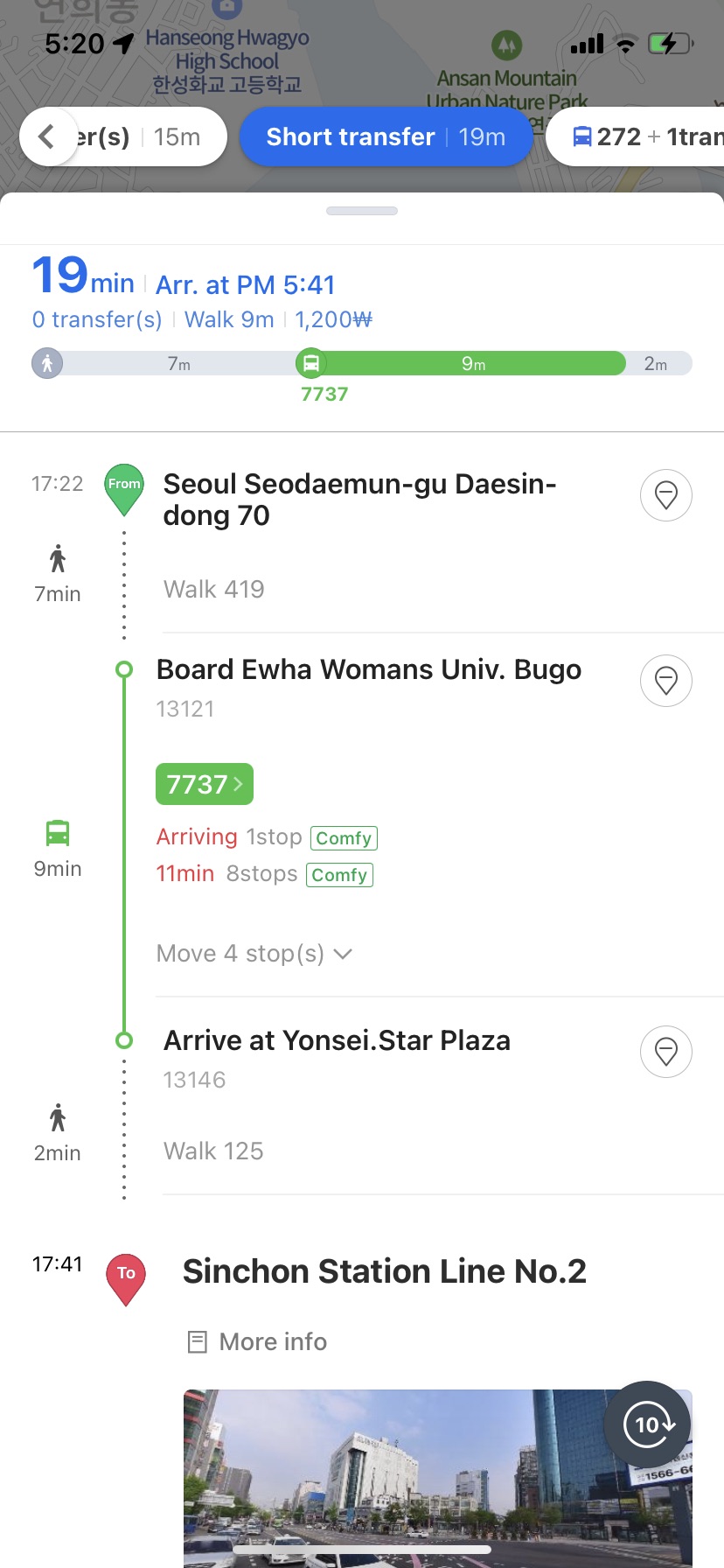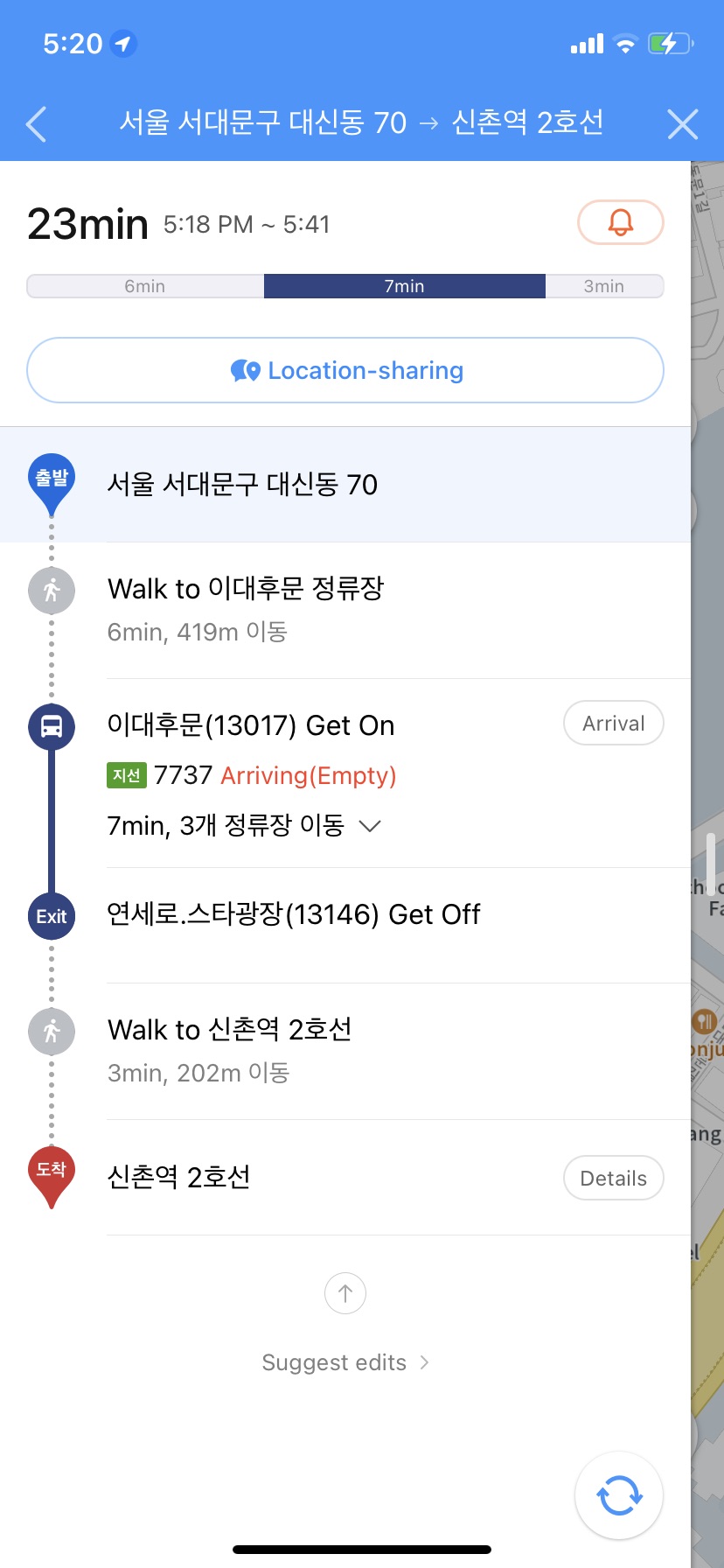
Navigating Seoul: NaverMap vs KakaoMap
One of the first major challenges I faced while studying abroad in South Korea is transportation. Initially, figuring out how to get around proved to be more difficult than navigating the language barrier. Through YouTube videos, blog posts and articles from expats living abroad and other students who have studied abroad in South Korea, I learned that the apps NaverMap and KakaoMap are better and more accurate than Apple’s Maps app or Google Maps.
Before arriving to South Korea, I thought I had researched extensively on what to expect as a foreigner, but nothing can truly prepare you enough to where you don’t face any challenges. Back home in the states, I’m not too familiar with the public transportation system. I’ve only ridden the bus and train a handful of times, and each time it was with someone who was very familiar with it, so I never had to learn any routes or schedules. Seeing as public transportation is the main source of transport in South Korea, I had to quickly learn how to navigate this new system while also dealing with the language barrier.
As mentioned above, NaverMap and KakaoMap are the dominant public transportation and navigation apps in South Korea. I quickly learned that they each have their own pros and cons. While KakaoMap provides very accurate (down to the second) arrival times for buses and trains, the step-by-step navigation provided is in Korean. Even when switching the language settings on the app, the landmarks and stop names are only available in Korean. As someone who is barely a beginner student in the Korean language, it was very difficult to use as I was unable to read the directions. On the other hand, NaverMap provides all step-by-step navigation as well as landmark and stop names in English. However, the downside is that the arrival and departure times for trains and buses aren’t as accurate as KakaoMap. As a result, I find myself using both apps simultaneously when traveling around. This way, I can see the Korean and English name of places, landmarks, and stops so that I can learn them better and not have to rely on translation apps all the time.
Another interesting aspect of public transportation in South Korea is the cleanliness. As previously stated, I don’t have much experience with public transportation in the states, however from the few times that I have used the bus and train, I can admit that it was not very clean. Each time, I remember seeing trash left behind either on the floor or on the seats. In South Korea, from the many times I’ve used the bus and train, I cannot recall seeing any trash even once. This difference makes for a better experience overall as not only do I feel safer, but I appreciate that everyone around is mindful of picking up after themselves so as to not leave any trash behind. Initially, I found getting around to be a challenge, but with the help of NaverMap and KakaoMap, I’ve learned how to use public transportation in South Korea (and thankfully now I only get lost sometimes :).

